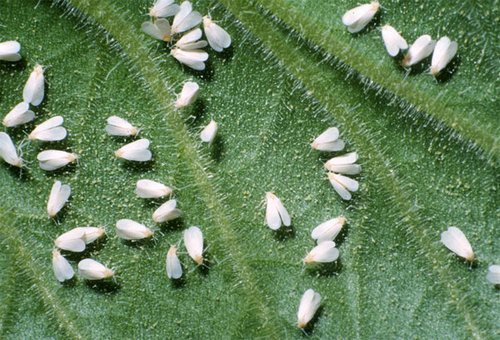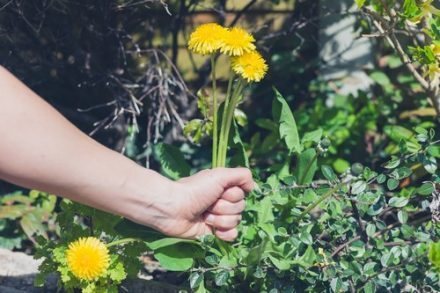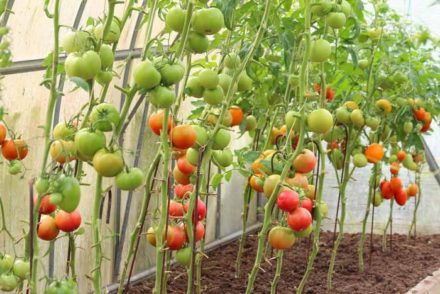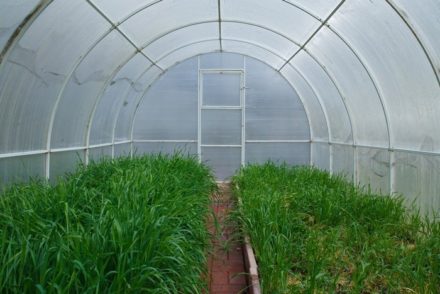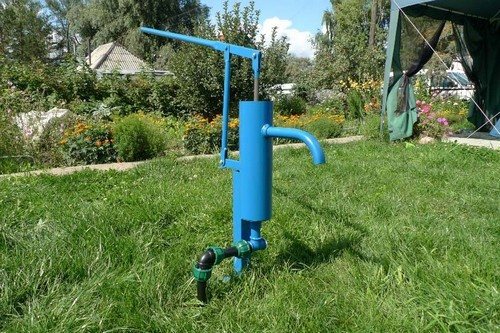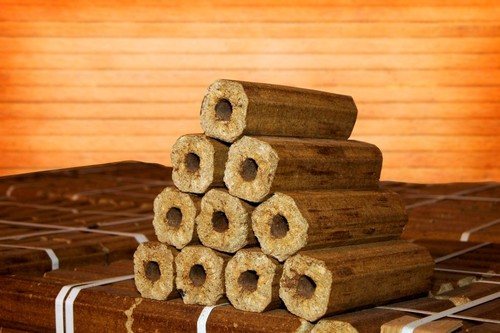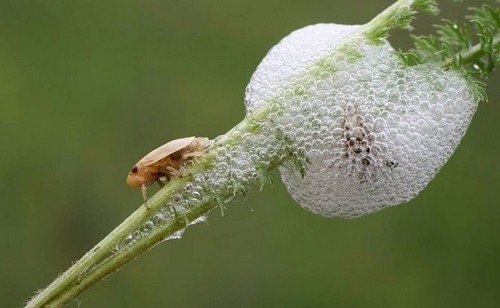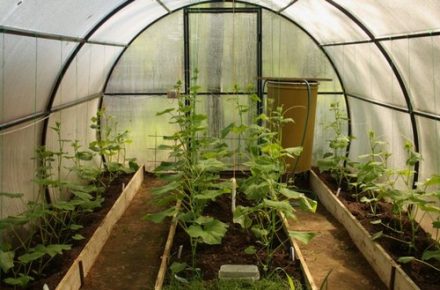Many gardeners, in order to obtain an earlier harvest, grow vegetables in greenhouse conditions, maintaining optimal humidity, temperature and light. This creates favorable conditions for plants, as well as for harmful insects, among which the greenhouse whitefly can be distinguished.
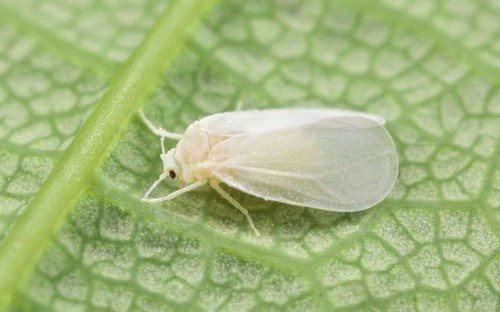
A whitefly is a small insect that looks like a moth, about 2mm in size. But despite its size, this species is capable of destroying the entire crop in a short time. Vegetable crops such as cucumbers, tomatoes, potatoes, eggplants and peppers are most susceptible to plaque. The greenhouse whitefly has no visual differences from its counterparts that live in the open air.
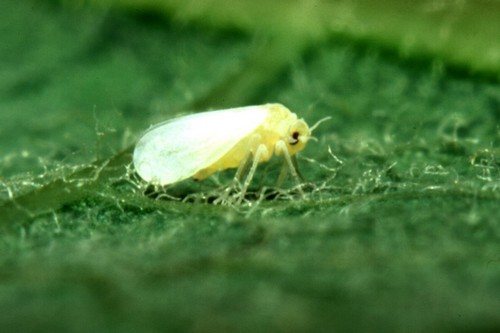
An individual matures in 1-1.5 months, depending on environmental conditions. The more favorable the living conditions, the faster the individual will mature. Unfortunately, whitefly is dangerous to plants in all its growth cycles. Total 4 cycles:
- Eggs. Each adult lays 150-200 eggs per cycle.
- Larvae. Their appearance occurs on the 12th day. They are also called wanderers because of their rapid movement along plant leaves.
- Nymphs. The second stage of larval growth sticks to the surface of the plant and becomes motionless, becoming covered with a light coating on top.
- Imago. A mature individual capable of eating plants.
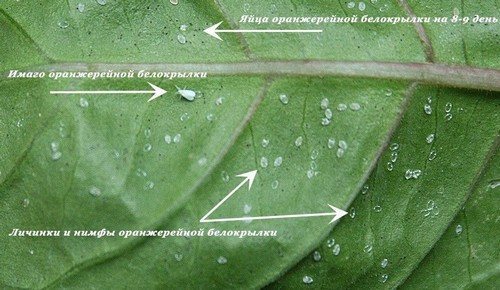
A mature individual lives for about a month, during which time she lays about 150 eggs, which also go through all stages of growth within 30 days, from larva to moth.It is not easy to identify the whitefly; it is located on the back of the leaves. The first manifestation of whitefly is darkening of the leaves. The adult dies in the fall, and the larvae remain overwintering in the ground and wake up in the spring.
Greenhouse (greenhouse) treatment
To reduce the risk of the spread of harmful insects, a very effective way is to treat the greenhouse after fruiting.
Processing includes:
- removal and collection of plant debris;
- treating the frame with bleach;
- removing the top coating for the whole winter (if possible);
- treating non-removable parts with an antiseptic;
- Digging up all greenhouse soil before winter.

You should not leave barrels of compost in greenhouses over winter. During decay, they form a suitable environment for overwintering harmful insects.
Mechanical method
The whitefly is washed away with a strong stream of water. After this, you need to prepare a soap solution, 100 g of laundry soap per 0.6 liters of warm water. Using a sponge, you need to wipe each leaf with this solution, washing off all the larvae. Many gardeners use tar soap to repel insects with a specific smell.
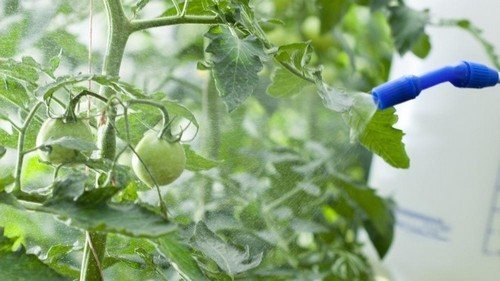
This method is suitable for small greenhouses. For larger areas the effect of this method will be minimal.
Traps
This method refers to variants of the mechanical method of exterminating harmful insects. Special traps are purchased, which are bright plates with an adhesive backing.You can make a trap yourself; you will need a strong base, it can be thick yellow cardboard or plywood painted with yellow paint. Anything bright attracts insects. The prepared base must be covered with an adhesive mass, which can be prepared as follows: rosin, castor oil and petroleum jelly must be mixed in a container. Add honey and mix until smooth. Apply the mixture to the base and hang it in the greenhouse, one trap per 10 square meters. meters.

For long-term use, you can use something stronger than a sheet of cardboard as a basis; they can be washed with warm soapy water and used again.
Biological method
Everything is very simple in this method. Beneficial insects such as ladybugs or lacewings are released into the greenhouse. They help destroy the larvae. The ladybug is a predator that hunts harmful insects.
The parasite “encarsia” is also effective, the success rate is up to 99%. A week before planting the seedlings, a couple of packs of “encarsia” are poured into the greenhouse. These parasites can find a whitefly at a distance of up to 20 m; they lay eggs directly into the body of the larva. After a couple of days the problem was solved.
Macrolophus, a predatory bug, is also suitable for tomatoes. The female lives on average 1-1.5 months; during her life cycle she is capable of destroying up to 2,500 larvae of harmful insects. You need to launch 4-5 individuals per square meter. meter. For prevention, one individual per square meter is enough. meter.
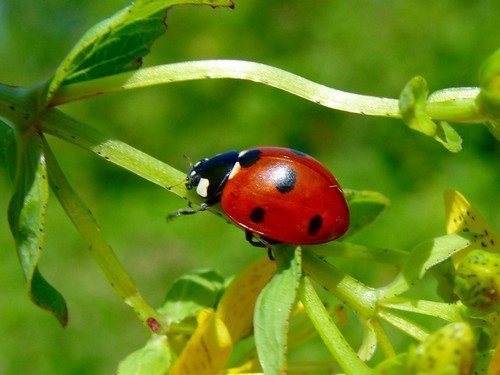
Fumigator
Many summer residents get rid of whiteflies using fumigators, which are used against mosquitoes and flies. To do this, you just need to plug the fumigator with the plate or liquid into a power outlet. Before turning on the fumigator, you must close all windows and doors.Unfortunately, along with harmful insects, beneficial insects also die.
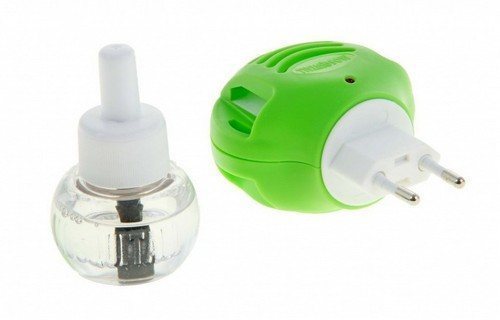
Folk remedies
Ammonia
Safe, inexpensive and effective. To prepare, you will need 35 ml of a 10% solution per 10 liters of water. A more concentrated solution may cause burns to plants. The leaves, especially their back side, are treated with the prepared solution. You need to spray every third day until all harmful insects are destroyed. This method cannot be used during flowering.
Garlic infusion
Harmful insects are sensitive to strong odors, so garlic will help get rid of whiteflies. For 1 liter of water you will need 5-6 cloves of chopped garlic. The solution is infused for a week and diluted at 10 g per liter. The resulting solution should be sprayed on the plant and soil in the greenhouse. The procedure must be carried out three times, with a break of a week. Unfortunately, the method is effective only at the initial stage; in its advanced form it is powerless. You can spray with garlic infusion for prevention.
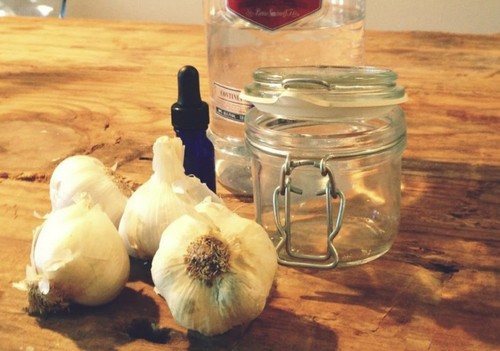
Carrying out preventive work
Whitefly is a dangerous pest that many people are unable to get rid of. The means at hand don’t always help, and you don’t want to use chemicals. Preventative measures play a good role in preventing the appearance of harmful insects.
- In the fall, after harvesting, you need to collect all the garbage and burn it. Dig up the soil. Disinfect all surface parts with lime. Wash the glass with a solution containing soap.
- If possible, the greenhouse should be opened so that it freezes. Frosts will help to cope with insect larvae in the soil.
- In the spring, you need to disinfect the greenhouse with copper sulfate. But not more often than once every three years. 200 g of vitriol are diluted per 10 liters of water. Treatment must be carried out no later than a month before planting.
- You should not plant plants close to each other; you need to follow the planting pattern.
- After planting seedlings, constant ventilation of the greenhouse is necessary. This will reduce the risk of disease.
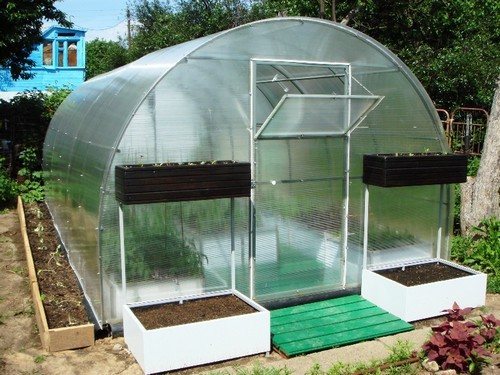
Many harmful insects spoil the life of gardeners and destroy crops. One of these insects is the whitefly, which is very difficult to get rid of. She has good immunity, so a comprehensive approach is required. Carrying out preventive measures together with folk remedies or chemicals will show excellent results and help protect the crop.


